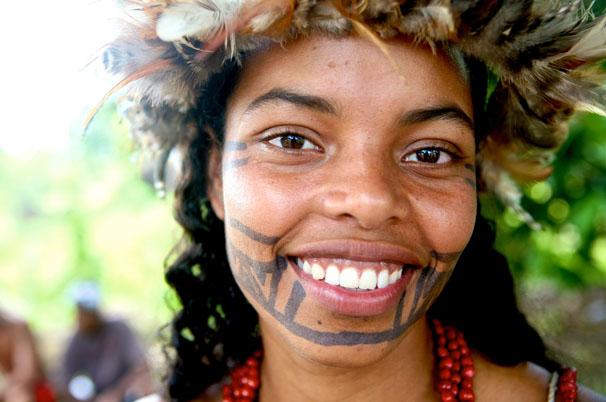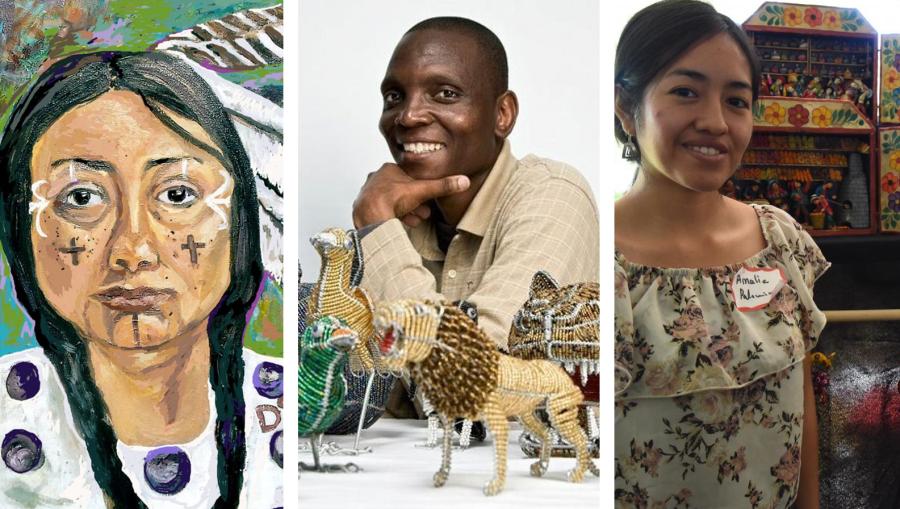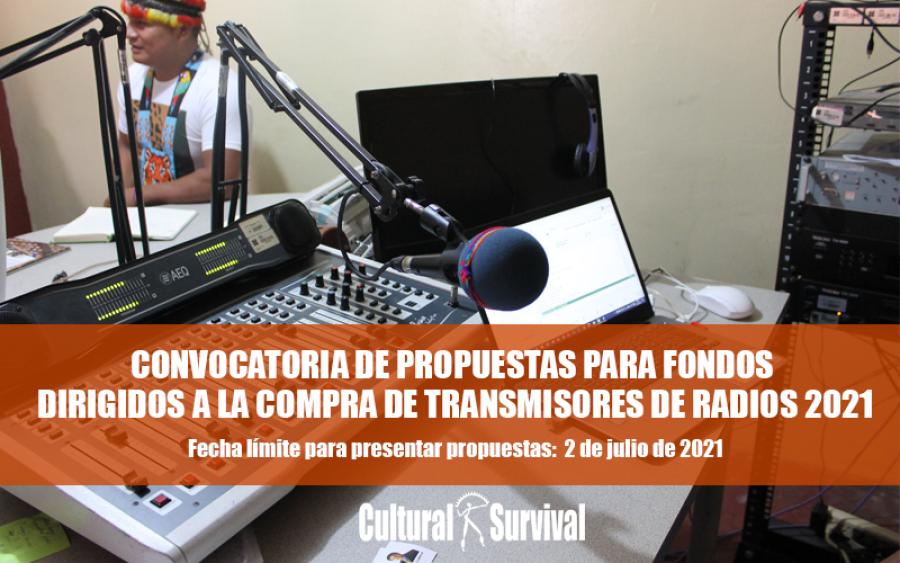
After significant scrutiny over World Bank Operative Policy 4.10 regarding Indigenous Peoples, we, Cultural Survival, would like to express our concern that these policies do not sufficiently protect the rights of Indigenous Peoples. To allow this policy to remain unchanged would undermine decades of tireless efforts to promote the rights of Indigenous Peoples. These policies fall far under the standards that one should expect from illustrious international organizations, particularly those whose goals are to promote human rights and development.
We believe that many of the concepts and components of OP 4.10 that were implemented as ‘safeguards’ do not live up to their expectation, and therefore do not ensure that every project accepted by the World Bank respects the rights of Indigenous Peoples and subsequently their land, territory, and resource rights.
The World Bank acknowledges the importance of Indigenous rights clearly in Paragraph 2 of OP 4.10, stating that it “recognizes that Indigenous Peoples play a vital role in sustainable development and that their rights are increasingly being addressed under both domestic and international law.” It is therefore concerning that in the aftermath of the United Nations Permanent Forum on Indigenous Issues (UNPFII), where the World Bank stated that it was committed to considering UN Declaration on the Rights of Indigenous Peoples (UNDRIP), International Labour Organization Convention No. 169 (ILO 169), and Free, Prior and Informed Consent (FPIC), there has not been any notable change to show true commitment to these policies. Though the World Bank makes reference to FPIC within OP 4.10, it does not clearly explain how it will be enforced, nor does it show any reference to its commitment to UNDRIP or ILO 169. As a highly regarded member of the international legal community, it is disappointing that the World Bank has not made a larger effort to include aspects of these within their Indigenous Rights Safeguard Policies.
We find that the most alarming aspect of OP 4.10 are its proposed changes that are being discussed. The World Bank claims “the proposed Environmental and Social Framework builds on the decades-old safeguard policies and aims to consolidate them into a more modern, unified framework that is more efficient and effective to apply and implement."[1] However, many of the concepts that have come up for discussion are incongruent with the human rights standards that one should expect to see from the World Bank. In fact, many of the changes appear to be diluting the current “safeguards” or giving the borrower an "opt out" option in certain circumstances that are determined by the borrower themselves. The World Bank’s statement on July 30th suggests that borrowers may opt out of recognizing Indigenous groups with formal Indigenous status that OP 4.10 discusses if there are “exceptional circumstances when there are risks of exacerbating ethnic tension or civil strife or where the identification of Indigenous Peoples is inconsistent with the constitution of the country..." The latter half of that sentence is discerning because it allows the borrower to opt out of the identification of Indigenous Peoples. This is disappointing because the World Bank does not include any policies of what state the borrowers constitution must be in and whether or not they have adopted or implemented UNDRIP. In that particular situation, borrowers who do not want to deal with the provisions set by OP 4.10 could blatantly not recognize Indigenous groups in their countries or recognize them as ethnic minorities or other terms which would not give them the full effect of the “safeguards.”
The World Bank also suggests in their July 30th draft that it will “include those aspects of the [borrowers] policy, legal and institutional framework, including its national, subnational, or sectoral implementing institutions and applicable laws, regulations, rules and procedures, and implementation capacity, which are relevant to the environmental and social risks and impacts of the project.”[2] Again, this does not hold the borrowing country to any standard of recognizing or respecting Indigenous Peoples and even in the situation where laws regarding Indigenous Peoples appear adequate, in practice, they may not be.
There is also some concern over the term “ancestral” as used by the World Bank in Article 6 and 7 of the Environmental and Social Standard regarding Indigenous Peoples. Article 6b defines what criteria will deem a group as an Indigenous community states that “collective attachment to geographically distinct habitats, ancestral territories, or areas of seasonal use of occupation” is an essential component of being considered an Indigenous people. However, article 7 clearly states that “this ESS applies to communities or groups of Indigenous Peoples who, during the lifetime of members of the community or group, have lost collective attachment to distinct habitats or ancestral territories in the project area, because of forced severance, conflict, government resettlement programs, dispossession of their land, natural disasters, or incorporation of such territories into an urban area.” The concerning aspect of the term "ancestral" is that Article 6 states that collective attachment to ancestral lands deems a group to be Indigenous but Article 7 states that it only applies to ancestral lands that have been lost during the lifetime of the current group in question. This raises the concern that Indigenous people interpret the term "ancestral" differently than as defined in this document, as well as the fact as the World Bank is unwilling to recognize Indigenous peoples who have collective attachment to ancestral lands that the government does not acknowledge as Indigenous because the government had seized them before the lifetime of the elders of the group in question. This is an issue that would be easily remedied if the World Bank would acknowledge and incorporate ILO 169 into their Indigenous Peoples safeguards.
The Grievance Mechanism proposed in Article 31 of the Environmental and Social Standard regarding Indigenous Peoples presents the issue that its structure may in fact be detrimental to its own efficiency. Article 31 states that “The Borrower will ensure that a grievance mechanism is established for the project, as described in ESS10, which is culturally appropriate and accessible to affected Indigenous Peoples, and takes into account the availability of judicial recourse and customary dispute settlement mechanisms among Indigenous Peoples.” Putting the borrower in full control of this mechanism seems counter-productive because it is likely that some of the complaints that may arise are regarding the actions of the borrower and therefore puts the borrower in the unique position of allowing the complaints to reach the World Bank or not. Without the incorporation of Indigenous Peoples in the Grievance Mechanism, there is no guarantee that it will be facilitated for the good of the affected Indigenous communities.
We implore the World Bank to consider its unique position of power in providing funds for borrowing nations, and that maintaining higher expectations for these nations could only be beneficial. As fellow members of the international community, knowing the struggles and obstacles that we all face on a daily basis to fight for human rights, we recommend the following changes for the benefit of not only Indigenous Peoples but for all peoples.
Recommendations:
We acknowledge that the World Bank stated during the UNPFII in May that it was committed to considering acknowledging and implementing UNDRIP, FPIC, and ILO 169 into the Indigenous Rights Safeguard Policies. We hope that your commitment these past few months has led you to believe that they are documents that could only strengthen your own policies, and that congruency between international legal documents in universally beneficial.
We recommend that all discussion that would allow for any “opt out” measures for borrowers to be terminated. These measures or any options included in World Bank Policies that allow borrowers to determine the needs of its own Indigenous Peoples without third party consultation with the Indigenous communities allows for far too many loopholes in the World Bank Policy structure.
We recommend that the World Bank incorporate the measures set by the Inter-American Court for Human Rights on the rights of Indigenous people on ancestral lands to replace the current policy. The South American region in particular struggles with the recognition of the rights of Indigenous Peoples and their ancestral lands, and we believe that acknowledgement of discussions that the IACHR and the Inter-American Commission for Human Rights have had, would have great impact on the rights of Indigenous Peoples on their ancestral lands. Again, the World Bank is in a unique situation to have high standards for borrowing countries and we believe that the World Bank would be acting in good faith if it would not allow projects from countries that are blatantly ignoring their obligations of being Member States of the Organization of American States.
We believe that a restructuring of a Grievance Mechanism to allow Indigenous Peoples to facilitate the discussion between the grieving parties and the World Bank would be a more effective strategy to prevent violations of Indigenous Rights. We recommend that the World Bank reaches out to Indigenous communities that may be affected by accepted projects and create a way to facilitate discussion with the group during the course of the project to ensure violations do not occur or are not shielded from the World Bank by the borrowing country.
Suzanne Benally
November 20, 2014
(Santa Clara Tewa and Navajo)
Executive Director
Cultural Survival



